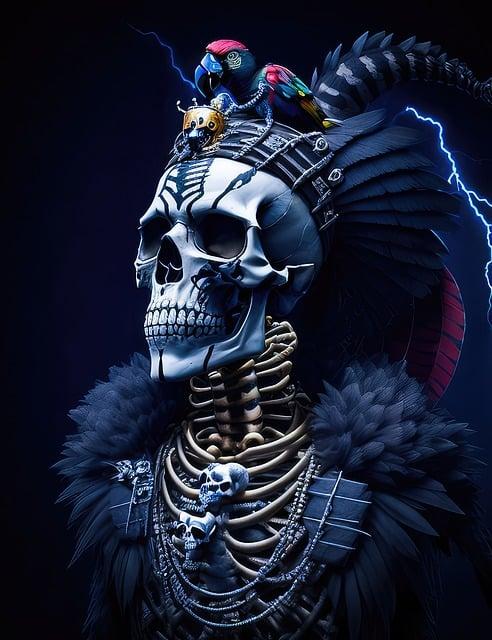In the vast and often turbulent sea of cinematic endeavors, few films manage to carve out a niche that not only captivates audiences but also redefines the very essence of their genre. “The Revenant,” directed by Alejandro González Iñárritu and starring Leonardo DiCaprio, is one such rare gem. This epic tale of survival and vengeance, set against the unforgiving backdrop of the American frontier, transcends the boundaries of traditional storytelling. With its breathtaking cinematography, visceral performances, and profound thematic depth, “The Revenant” emerges as a genre-defining masterpiece that etches an indelible mark on the viewer’s psyche. As we delve into this review, we will explore the myriad elements that contribute to its lasting impression and its pivotal role in shaping the future of cinematic narratives.
Cinematic Brilliance and Visual Mastery
In “The Revenant,” Alejandro González Iñárritu showcases an extraordinary command over visual storytelling that elevates the film into a realm of sheer cinematic brilliance. Emmanuel Lubezki’s masterful cinematography captures the raw, untamed beauty of the wilderness, transforming each frame into a work of art. The use of natural light and long, uninterrupted takes creates an immersive experience that pulls the audience into the brutal yet breathtaking world of the early 19th century American frontier.
Highlights of the film’s visual mastery include:
- Stunning landscape shots that emphasize the vastness and isolation of the wilderness
- Meticulous attention to period detail, from the rugged costumes to the authenticity of the frontier settings
- Seamless integration of CGI to enhance, rather than overshadow, the practical effects
The synergy between Iñárritu’s visionary direction and Lubezki’s unparalleled cinematography results in a visceral and unforgettable viewing experience. The film’s visual elements are not just a backdrop but a vital component of the storytelling, amplifying the emotional and physical struggles of the characters.
Powerful Performances that Elevate the Narrative
One of the standout elements of ”The Revenant” is the sheer intensity and depth of its performances, which play a crucial role in elevating the film’s narrative. Leonardo DiCaprio delivers a tour-de-force portrayal of Hugh Glass, capturing the raw essence of survival and human resilience. His performance is a masterclass in physical acting, where every grunt, gasp, and grimace conveys the harrowing journey of a man on the brink of death. DiCaprio’s commitment to the role is evident in every scene, making the audience feel the bone-chilling cold and the searing pain of his character.
Tom Hardy as John Fitzgerald provides a perfect counterbalance to DiCaprio’s Glass. Hardy’s embodiment of Fitzgerald’s ruthless pragmatism and moral ambiguity adds layers of complexity to the story. His performance is marked by a brooding intensity and a palpable sense of menace, making him a compelling antagonist. The dynamic between DiCaprio and Hardy creates a gripping tension that propels the narrative forward, keeping viewers on the edge of their seats.
- Leonardo DiCaprio: Masterful physical acting, deeply immersive.
- Tom Hardy: Intense, menacing, and complex portrayal.

Thematic Depth and Emotional Resonance
The Revenant transcends the boundaries of a conventional survival story, delving deep into themes of revenge, redemption, and the human spirit’s resilience. The film masterfully explores the primal instincts that drive us, juxtaposed with moments of poignant introspection. Alejandro González Iñárritu’s direction brings a profound emotional weight to every frame, making each scene a visceral experience. The narrative doesn’t just tell a story of survival; it interrogates the very essence of what it means to endure, to suffer, and ultimately, to rise above one’s circumstances.
DiCaprio’s portrayal of Hugh Glass is nothing short of transformative, offering a raw, unfiltered look at a man pushed to the brink. The cinematography by Emmanuel Lubezki further amplifies this emotional journey, capturing the stark beauty and unforgiving nature of the wilderness. The thematic depth is enriched by the film’s attention to detail, from the authenticity of the period settings to the nuanced character interactions. The Revenant isn’t just a film; it’s an exploration of the human condition, leaving audiences with a lasting sense of awe and introspection.

Why The Revenant Deserves a Place in Your Watchlist
One of the most compelling reasons to add The Revenant to your watchlist is its extraordinary visual storytelling. Directed by Alejandro González Iñárritu, the film is a masterclass in cinematography, with Emmanuel Lubezki’s work behind the camera earning widespread acclaim. The stunning natural landscapes, captured in natural light, create an immersive experience that transports viewers to the harsh wilderness of the American frontier. The film’s visual prowess is not merely aesthetic but serves to heighten the visceral and emotional impact of Hugh Glass’s harrowing journey.
Furthermore, the performances are nothing short of phenomenal. Leonardo DiCaprio delivers a career-defining role, portraying Glass with a raw intensity that is both haunting and inspiring. His commitment to the role is evident, making his struggle for survival deeply personal and profoundly moving. Additionally, Tom Hardy’s portrayal of John Fitzgerald adds a layer of complexity to the narrative, presenting a morally ambiguous antagonist that keeps the audience on edge. The film’s dedication to authenticity and depth makes it a standout, ensuring that it resonates long after the credits roll.
- Visual Mastery: Natural lighting and breathtaking landscapes.
- Powerful Performances: Leonardo DiCaprio and Tom Hardy at their best.
- Emotional Depth: A gripping tale of survival and resilience.































